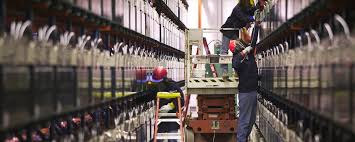
Breaking News
 FDA Chief Says No Solid Evidence Supporting Hepatitis B Vaccine At Birth
FDA Chief Says No Solid Evidence Supporting Hepatitis B Vaccine At Birth
Evergreen, Colorado: Another Killing Zone in America
 Trump Cryptically Writes "Here We Go!" In Reaction To Russia-Poland Drone Incident, Oil Sp
Trump Cryptically Writes "Here We Go!" In Reaction To Russia-Poland Drone Incident, Oil Sp
 Qatar Says It Reserves Right To Retaliate Against 'Barbaric' Netanyahu
Qatar Says It Reserves Right To Retaliate Against 'Barbaric' Netanyahu
Top Tech News
 Methylene chloride (CH2Cl?) and acetone (C?H?O) create a powerful paint remover...
Methylene chloride (CH2Cl?) and acetone (C?H?O) create a powerful paint remover...
 Engineer Builds His Own X-Ray After Hospital Charges Him $69K
Engineer Builds His Own X-Ray After Hospital Charges Him $69K
 Researchers create 2D nanomaterials with up to nine metals for extreme conditions
Researchers create 2D nanomaterials with up to nine metals for extreme conditions
 The Evolution of Electric Motors: From Bulky to Lightweight, Efficient Powerhouses
The Evolution of Electric Motors: From Bulky to Lightweight, Efficient Powerhouses
 3D-Printing 'Glue Gun' Can Repair Bone Fractures During Surgery Filling-in the Gaps Around..
3D-Printing 'Glue Gun' Can Repair Bone Fractures During Surgery Filling-in the Gaps Around..
 Kevlar-like EV battery material dissolves after use to recycle itself
Kevlar-like EV battery material dissolves after use to recycle itself
 Laser connects plane and satellite in breakthrough air-to-space link
Laser connects plane and satellite in breakthrough air-to-space link
 Lucid Motors' World-Leading Electric Powertrain Breakdown with Emad Dlala and Eric Bach
Lucid Motors' World-Leading Electric Powertrain Breakdown with Emad Dlala and Eric Bach
 Murder, UFOs & Antigravity Tech -- What's Really Happening at Huntsville, Alabama's Space Po
Murder, UFOs & Antigravity Tech -- What's Really Happening at Huntsville, Alabama's Space Po
Behold: The World's Largest Battery

Like the rest of Interior Alaska, Fairbanks, a region of nearly 100,000, is separated from the power grid of the contiguous US and Canada. Electricity is produced locally and regionally from coal- and oil-fired power plants and power outages within this remote microgrid are frequent. In Fairbanks, it's winter more than it isn't and snow is a frequent culprit.
This weekend, the city will celebrate the anniversary of a battery. On August 27, 2003, the Golden Valley Electric Association (GVEA), the cooperative that provides power to the Fairbanks area, powered up BESS, aka the Battery Energy Storage System. Larger than a football field and weighing 1,500 tons, BESS exists to ensure continuity of electric service. If the supply of electricity coming in from relatively distant coal plants to the south is interrupted, BESS kicks in until local power plants can be put online.
BESS can hold things down powerwise for all of seven minutes. It functions as what's known as a spinning reserve. It's a bridge between primary and backup power and is generally taken to mean some amount of excess generating capacity that is at any given time pre-synchronized to the grid. If power goes down, switching the spinning reserve on should be seamless.

 Tiny briefcase engine boosts EV range beyond battery power
Tiny briefcase engine boosts EV range beyond battery power 

